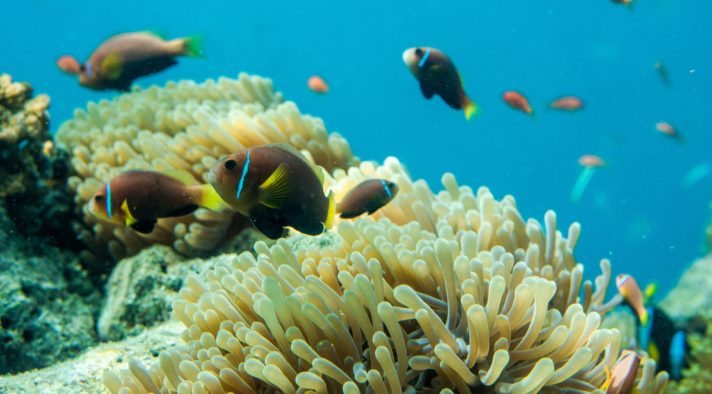As part of the Regions4 interviews series, we talk to RAP Pacífico, one of the newest RegionsAdapt members and signatory of the Race to Resilience to discuss their experience with the integration of agendas, financing climate action and multi-level cooperation to contribute to the resilience of our planet.
Regions 4: The territorial association RAP Pacífico (Administrative and Planification Pacific Region) was born in 2016 with the objective of promoting economic and social development in the Pacific region of Colombia with 5 direct action lines: governance and territorial governability; infrastructure and knowledge management; collective and inclusive economic development; sustainability of the environment and ecosystems; and cultural identity and territorial peace. Have you observed any intersections between those action lines?
RAP Pacífico: In 2016, when the creation and consolidation of RAP Pacífico was approved, we established the Pacific Pact, which indicated the aforementioned strategic guidelines of the entity. With this as a base, we started developing a more specific plan which could further guide us in the development of programmes and projects in the region.
This is the current 20-year roadmap towards the development of the pacific region, built from the identification of different regional problematics and the definition of a joined investment and management agenda.
These strategic guidelines, although specific, are not isolated from each other but rather connected in multiple ways, sometimes even demanding certain actions from one guideline occur before another guideline can work. Furthermore, we have encountered that regional events (meaning, a joined opportunity or risk shared by all departments of the region in their roadmap vision) often meet at least two strategic guidelines.
R4: RAP Pacífico is built on a framework of community and multi-level cooperation. What mechanisms/processes do you use to guarantee that the projects carried out comply with this mission? How do you include multi-level governance in your work and why is it important?
RAP: Projects that are part of the Strategic Regional Plan are a product of multi-level governance in that different actors from civil society have participated through “citizen participation tables”, including ethnic groups, civil society, private sector, regional academic representatives, regional authorities in different sectors, and regional congress people, amongst other actors.
This process reflected the participation of more than 800 actors, and even though the Law of Regions does not demand the participation of as many diverse actors we have included them to assure that the joined projects are truly a product of multi-level action and create a public value.
As an example, our most recent project on sustainable tourism emerged as an initiative proposed in one of our multi-level workshops which highlighted this as a main point in the dynamization of regional economic roles.
R4: What funding mechanisms do you use for your projects? Is it always the same or does it depend on the needs of the project?
RAP: When it comes to projects where RAP Pacífico is the enforcer as a regional entity, most of the financing resources come from different regional departments and sometimes can have national funding or be partially funded through international cooperation.
However, when it comes to the internal functioning of RAP Pacífico, the funding comes from the established member quotas. These quotas are, in and of themselves, not enough for funding big projects, but they can help in some strategies we are developing in cooperation with different organisations and funds, such as reforestation efforts or school kits donations.
R4: How do you think other actors, national or supranational, can help promote access to finance for adaptation?
RAP: There is a reality that cannot be ignored, and that is that to implement an environmental initiative you require an injection of considerable resources, not only for the execution of it, but also for the formulation and structuring aspects. To this end, it is necessary to build a network of strategic allies that pursue a common goal. These allies can belong to one of the 4 main sectors (university, business, state, or civil society) and must work in an articulate manner to provide the necessary resources, which could be financial, but also technical.
Additionally, the experience and relationship of each strategic actor can be used so more allies join the climate adaptation initiatives. This implies that every entity working on a project must be a spokesperson for it until all necessary resources can be acquired.
R4: At the moment, a series of PES (Payments for ecosystem services) projects have been approved and are being executed for the conservation of biodiversity and the regulation of water quality. What can you tell us about the impact they are having in the area so far? Why do you think it is important to strengthen the integration of the biodiversity and climate agendas and what is RAP Pacífico doing to promote this integration?
RAP: Our region possesses several strategic ecosystems that provide their inhabitants different services. RAP Pacífico has been setting up PES projects in regional water sources with the help of local and national entities.
We have found out that these kinds of initiatives are essential to diminish the environmental impact of the economic activities carried out by the surrounding communities, as through activities of restoration, preservation, and pedagogy it avoids the indiscriminate expansion of the regional agriculture and livestock border. In this way, the execution of these projects leaves multiple environmental and social benefits, such as the increase in the quality of the water in the intervened water sources, climate change mitigation, the development of adaptation capabilities and community resilience, appreciation for conservation and restoration activities as economic activity, and the articulation between communities to support environmental actions.
PES initiatives have been developed in the region, usually as pilot projects with few resources that involve small areas, they tend to be well received by the communities and therefore it is worth it to develop them on a bigger scale.
R4: How can RegionsAdapt support these projects and new adaptation processes? What are your expectations by joining the initiative?
RAP: RAP Pacífico is an entity fully committed to the socioeconomic and environmental development of the region. Now, considering the experience and the network of allies that RegionsAdapt possesses we hope to engage in strategic alliances with different actors at a global level that will allow as to unify efforts towards the conservation of our ecosystems, collaborating in a technical and economic manner in the different initiatives that might come up when developing an environmental agenda.
R4: Regions4 is getting ready to participate at COP26 with the objective of demanding higher participation for regional governments in the global decision-making processes. As members of their RegionsAdapt initiatives, what message do you have for the Parties to accelerate the implementation of measures to face climate change?
RAP: Climate change is an issue that affects us all without distinctions of race, gender, or socioeconomic status. We are all living its impact, with consequences ranging from floods to droughts and forest fires. Our region possesses a big expanse of farmed land which is the basis of the economic support of the producers and the food security of communities, it’s at high vulnerability risk to climate change, which would entail unexplainable economic and alimentary losses for the region. In this sense, it is necessary for all of us to join efforts to mitigate this situation through environmental initiatives applicable to our territories that won’t just stay on paper.
Our ecosystems are in danger, and we must act now.
Further information
To learn more about RAP Pacífico and its work visit their page here (available in Spanish)
To read more about the RegionsAdapt initiative, click here
To join the Race to Resilience, click here.



